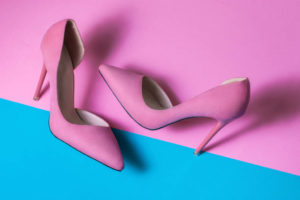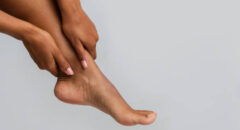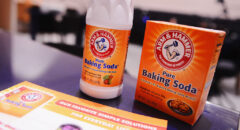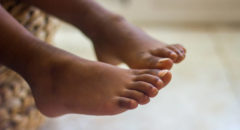 Today we have so many options when it comes to buying shoes! Shoe advertisements are all around us. While the shoe options are plentiful, many women are in the dark when it comes to picking an appropriate shoe. Many women love to wear narrow pointed toe shoes and mistakenly squeeze their feet into shoes that hurt their feet.
Today we have so many options when it comes to buying shoes! Shoe advertisements are all around us. While the shoe options are plentiful, many women are in the dark when it comes to picking an appropriate shoe. Many women love to wear narrow pointed toe shoes and mistakenly squeeze their feet into shoes that hurt their feet.
Pointy shoes have become a fashion trend. Many women, as well as men, like to wear these types of shoes; however, the toe box of a shoe (which is where the toes are housed) can contribute a lot to the comfort or discomfort based on the shape and size of the toe box. So how does a narrow toe box effect one's toes?
The chronic wearing of narrow toe boxes can contribute to toe damage. Ligaments can become damaged over time and cause malposition of toes as well as pinched nerves.
Contrary to popular belief hammer toes are not caused by shoes alone; however, shoes can exacerbate pain. Hammertoes are caused by different types of compensatory mechanisms within the foot. Foot type is hereditary for the most part, but tight fitting shoes have been shown to contribute to hammertoes.
What is a hammertoe?
A hammertoe is acontracture of the toe knuckle at a particular joint. Hammertoes are caused by two different by biomechanical reasons. One is called flexor stabilization. This foot type is typically seen in a flatfoot. When a person with flat feet walks, usually the flexors fire longer and faster than the extensor tendons during the stance phase of gait. Over time, adaptive changes occur and lead to instability in anatomical structures.
In persons with higher arch feet, (cavus foot) during the swing phase of gait, the flexors fire faster and longer than the extensor tendons. This leads to an adaptive change which causes hammertoes.
In both types of feet, the knuckle is bent which begins to rub in the shoe. The rubbing in the shoe begins to cause the hardened skin to form over the affected area which is called corns.
These corns form to protect itself from the friction. These corns can become painful and even ulcerate during extreme cases.
So what should one do about hammertoes can they be prevented? If you have them how can they be treated? Even if you have scars what can be done to cover these scars?
Formation of hammertoes in most cases isinevitable, but wearing proper fitting shoes can help reduce pain and prevent further damage.
The best conservative treatment option is to stop wearing tight-fitting shoes that rub over the tops of your toes. See a podiatrist to assist as well--going to a nail salon to have corns removed or shaved down is not a good option as unintentional nick or scrape can lead to infection.
Contrary to what one may see on television, nothing will straighten hammertoes other than surgery. One may regain some flexibility, but the toe will not straighten. Devices that go between the toes that claim to straighten the toes simply do not result in straightened toes. There are many tendons and ligaments that hold the toes together that need to be either cut or repositioned in order to permanently straighten a hammer toe.
Concerning hyperpigmentation over corns, there are some skin concealers that can cover up these corns and scars. If surgery is chosen, the corns will be excised when the procedure is performed. However, if the person goes back to wearing tight-fitting shoes that rub these scars then lesions can return.
Choosing proper footwear is very important. If shoes cause toe pain, they simply are not the shoe for you!

Dr. Monique Renee Rolle, DPM, MEd, AACFAS is an Associate of the American College of Foot and Ankle Surgeons, member of the American Diabetes Association, Virginia Podiatric Medical Association, American Podiatric Medical Association, & Owner/Podiatrist of Lansdowne Podiatry with locations in Leesburg, VA and on Capitol Hill. She is also an entrepreneur with her own foot product line, Dr. Mo's Products. You can follow her on social media @drmrolle, @doctormosproducts, www.facebook.com/LansdownePodiatry.








